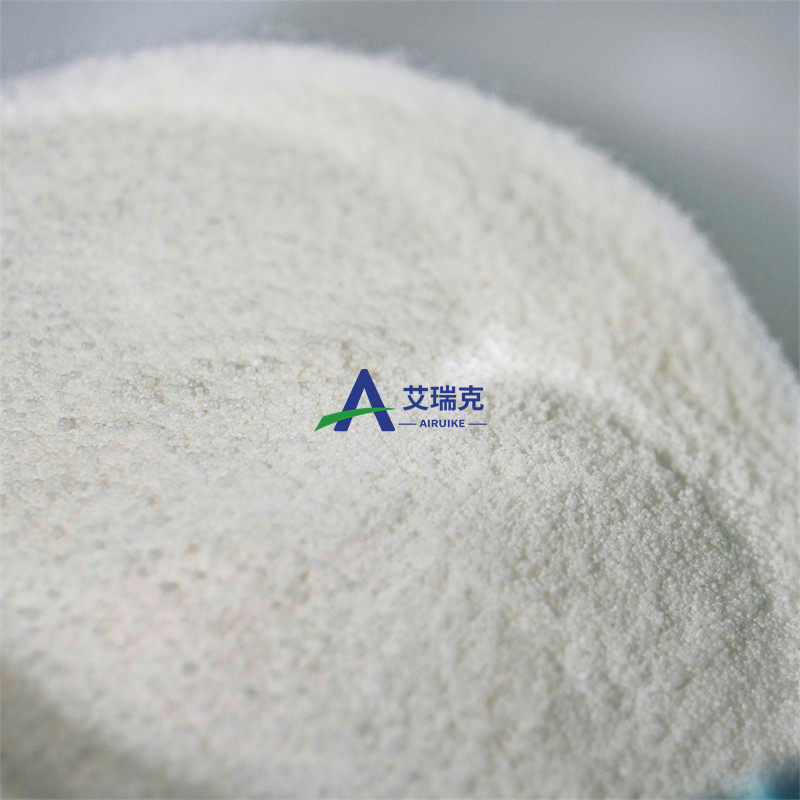Recent achievements in Parkinson's disease research
-
Last Update: 2019-11-04
-
Source: Internet
-
Author: User
Search more information of high quality chemicals, good prices and reliable suppliers, visit
www.echemi.com
November 4, 2019 / BIOON / -- this issue brings you the latest research results in the field of Parkinson's disease I hope readers will like it 1 SCI transl Med: scientists are expected to develop a new treatment for Parkinson's disease doi: 10.1126/scitranslmed.aau6870 days ago, an international journal Science Translational In the Research Report on medicine, scientists from Northwestern University in the United States developed and tested a new Parkinson's disease therapy by using neurons derived from patients' bodies, which can improve the treatment of Parkinson's patients by slowing down the effect of harmful gene mutations Some experimental therapies for genetic disorders can target mutated proteins or enzymes, but in this study, researchers used a completely different method to replace the damaged enzymes Researchers enlarged the function of healthy enzymes, so as to study human brain cells and mouse models, and successfully slowed down the symptoms of Parkinson's disease patients The researchers point out that the activation of wild-type glucocerebrosidase (gcase) may be a potential therapeutic target for many forms of Parkinson's disease Parkinson's disease is the second most common neurodegenerative disease It mainly affects the function of neurons in the substantia nigra area of the brain These neurons are mainly responsible for the production of dopamine, a chemical messenger used to transmit signals through the brain At the same time, these neurons can also transmit information related to the planning and control of body movement Only the mutation of gba1 can represent the most common genetic risk factor of Parkinson's disease Gba1 can encode a special enzyme called glucocerebrosidase (gcase), which is very important for the function of neurons Mutations related to Parkinson's disease can promote the deactivation of gba1 and the production of abnormal gcase enzymes, which lead to the accumulation of dopamine producing neuronal toxic proteins With the death of neurons, patients will have symptoms such as tremor and tardiness Because some treatments can improve the symptoms of patients, but there is no treatment to block the disease at present The researchers point out that drug development for gba1 related Parkinson's disease focuses on the function of stable mutant gcase and limits its harmful effects, however, these therapies can only play a role in a small number of Parkinson's disease patients; on the contrary, activation of wild-type gcase may be related to multiple forms of Parkinson's disease with reduced activity of wild-type gcase In the current research, researchers have developed a series of new chemical activators, which can stabilize and amplify the activity of normal gcase These small molecular activators that can combine with gcase can improve the cell dysfunction related to Parkinson's disease; more importantly, they can also play a role in many Parkinson's diseases Researcher Krainc said that this study points out the potential of regulating wild type GCase activity and protein levels in genetic and idiopathic Parkinson disease, and highlights the importance of individualized or precise neuropathy therapy development In 2017, researcher krainc and his colleagues pointed out in the journal Science that some key pathological features of Parkinson's disease can only be observed in human neurons, not in mouse models; this emphasized the importance and value of patient derived neurons in the development of Parkinson's disease drugs The researchers hope to conduct more in-depth analysis and detection of human neurons to develop candidate drugs that can effectively target dopaminergic neurons in patients with Parkinson's disease 2 Commun Biol: the new research is expected to analyze the cause of Parkinson's disease in the future Doi: 10.1038/s42003-019-0598-9 One of the biggest difficulties in the treatment of Parkinson's disease is to know when it begins to occur Now researchers from the Federal University of Rio de Janeiro in Brazil and the University of Virginia School of medicine in the United States have published a study in the journal communication biology that may help solve this problem For the first time, scientists have observed how the key protein "α - synuclein" in Parkinson's disease changes with time and can identify the initial stage of protein aggregation It is well known that the degeneration of neurons leading to the onset of symptoms such as tremor is related to the aggregation of α - synuclein (also known as amyloid filaments) in the brain Before the formation of such filaments, α - synuclein undergoes an intermediate stage called "oligomer", which also exists in the brain of Parkinson's disease patients However, there is no consensus on the mechanism of triggering oligomer aggregation and neuronal cell loss and degeneration In the course of the study, the scientists compared the transformation of four α - synuclein variants over time, three of which were related to the early onset of the disease, and the other one was found in samples of elderly patients They then observed significant differences in the aggregation of each protein and found that oligomers developed much more rapidly in the early stages of disease This result may explain why the patients carrying these mutants have symptoms early In order to carry out the research, the researchers used the most advanced biological imaging technology First, they used fluorescent probes to visualize the steps of each protein aggregation In addition, they optimized the observation conditions to detect previously undiscovered structures during α - synuclein polymerization The use of frozen electron microscopy is also important for this study By allowing resolution close to the atomic level, scientists observed the structure of amyloid filaments According to Oliveira, building on the structures they found could help develop new treatments for the disease "By rapidly freezing these samples and obtaining advanced electron microscope images, we can better understand the binding of these wrong proteins in their natural environment and the way to avoid their formation," he said 3 Movement disorder: the disorder of immune system in Parkinson's disease patients doi: 10.1002/mds.27815 the latest research shows that the behavior of immune cells in the blood of Parkinson's disease patients is significantly different from that of normal patients In addition, the author suggests that drugs can regulate the immune system, so as to achieve the purpose of inhibiting brain degeneration The research was conducted by researchers from the Department of biomedicine, Aarhus University, Denmark, and was published in the recent journal of movement disorders "The research project confirms a growing theory that Parkinson's disease is not only a brain disease, but also related to the immune system Whether it's in the brain or the rest of the body, "said Marina Romero Ramos, the author and associate professor of neuroscience Dr Sara Konstantin Nissen, the lead author of the study, added: "in the long run, this finding suggests that immunomodulatory therapy, combined with the current use of levodopa, may help slow the progression of the disease." Parkinson's disease is characterized by the abnormal accumulation of proteins called "α - synuclein", which leads to the slow degeneration of brain neurons This causes the patient to develop symptoms of dyskinesia In this new study, the researchers tested the blood samples of 29 patients with Parkinson's disease and 20 control subjects for protein α - synuclein, and determined that the immune cells in the blood of patients with Parkinson's disease had poor ability in regulating cell surface immune markers, and their efficiency in secreting anti-inflammatory molecules was lower than that of the control group "The immune system works in a delicate balance On the one hand, it eliminates the accumulation of invading microorganisms and superfluous proteins (such as α - synuclein) But on the other hand, the immune system must also avoid excessive exuberance, otherwise the body's own cells will be damaged due to excessive inflammation "In academia, she added, it is believed that immune cells in the blood contain (or express) a receptor called CD163 on their surface and migrate to the brains of Parkinson's patients It was once thought that these cells could help clear away the accumulation of α - synuclein, which damages the brain, but the current research shows that these cells have been wrongly regulated in the blood before entering the bloodstream Sara Konstantin NISSE said: "this leads us to believe that drug regulation of the immune system may at least slow down the degeneration of neurons in the brain of Parkinson's patients." 4 Science: develop new strategies for Parkinson's disease! In a new study, researchers from Northwestern University in the United States developed and tested a new strategy to treat Parkinson's disease by reducing the impact of harmful gene mutations using patient derived neurons The relevant research results were published in the Journal of Science Translational Medicine on October 16, 2019, and the title of the paper is "a Modulor of wild type glucocelebrosidase improves pathogenic phenology in dopaminergic national models of Parkinson's disease" The corresponding author is Dr Dimitri krainc, director of neurogenetics center, Feinberg School of medicine, Northwestern University Some experimental treatments for genetic diseases target mutated proteins or enzymes, but this new study uses a different approach Instead of trying to repair the mutated enzyme, krainc and his team expanded the healthy enzyme, which successfully alleviated Parkinson's disease symptoms in mouse models "This new study highlights the potential therapeutic target of wild-type β - glucocerebrosidase (gcase) activation in many forms of Parkinson's disease," krainc said Parkinson's disease is the second most common neurodegenerative disease, which mainly affects neurons in the brain area called substantia nigra These neurons are responsible for the production of dopamine, a chemical messenger that transmits signals throughout the brain, and for the transmission of information that plans and controls body movements According to this new study, gba1 gene mutation is the most common genetic risk factor for Parkinson's disease Gba1 encodes gcase, an enzyme important for neuronal function Mutations related to Parkinson's disease can make gba1 lose function and produce abnormal gcase, which leads to the accumulation of toxic proteins in dopamine producing neurons As this population of neurons dies, patients develop symptoms such as tremor and slow movement Although some drugs can alleviate these symptoms, there is no way to prevent or slow down the disease According to krainc, drug development in patients with gba1 related Parkinson's disease focuses on stabilizing mutated gcase and limiting its harmful effects However, these drugs are only effective for several forms of Parkinson's disease "Conversely, activation of wild-type gcase may be more meaningful for a variety of forms of Parkinson's disease that exhibit reduced wild-type gcase activity," krainc said In this new study, krainc team developed a series of new chemical activators that can stabilize and expand normal gcase One of the chemical activators is a small molecule combined with gcase, which can improve the cell dysfunction related to Parkinson's disease in neurons from patients Krainc said Importantly, these activators can be used in many forms of Parkinson's disease, indicating that
This article is an English version of an article which is originally in the Chinese language on echemi.com and is provided for information purposes only.
This website makes no representation or warranty of any kind, either expressed or implied, as to the accuracy, completeness ownership or reliability of
the article or any translations thereof. If you have any concerns or complaints relating to the article, please send an email, providing a detailed
description of the concern or complaint, to
service@echemi.com. A staff member will contact you within 5 working days. Once verified, infringing content
will be removed immediately.







